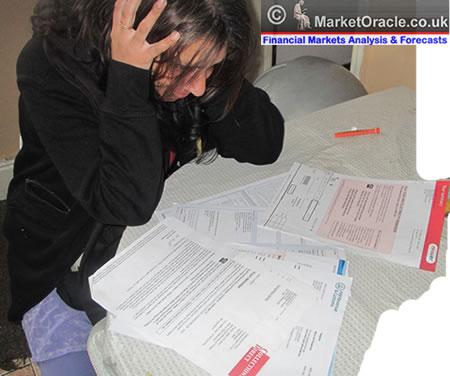QE2 Money Printing, Why This Time Is Different
Interest-Rates / Quantitative Easing Oct 02, 2010 - 10:02 AM GMTBy: Bryan_Rich
 Since the Fed’s most recent meeting, everyone seems to have an opinion about another round of extraordinary monetary stimulus and the economic and market reactions such a move could leave in its wake.
Since the Fed’s most recent meeting, everyone seems to have an opinion about another round of extraordinary monetary stimulus and the economic and market reactions such a move could leave in its wake.
Many believe “this time is different” … words that tend to have a very poor track record of coming true.
With that, they think this go-around of QE will actually boost demand. More demand will lead to a pick up in the key components of economic growth for building a sustainable recovery — consumption and investment. And that will lead to a hyper-surge in inflation, debt-monetization and destruction of the dollar.
Meanwhile most of the world expects the mere hint of QE to jumpstart another runaway train of asset reflation — higher stocks, higher commodities, higher risk assets in general and a lower dollar …
I See It Differently
The result of another round of QE at the Fed and other central banks will likely have the same effect as last time: None.
Consumers who have had significant wealth destroyed, are unemployed or face the threat of extended periods of joblessness, and are digging their ways out of a mountain of debt don’t have the appetite to spend nor borrow, regardless of how “easy” the money is said to be.
As for the consequence another round of QE will have on markets, I think this time IS different …
First, another round of QE is no longer accompanied by massive fiscal stimulus from all corners of the world, including the 14 percent of GDP money printing rolled out by China — money that flooded asset markets around the world.
This time, central banks are out of fiscal bullets. Not only has the bond market attack on weak, euro-member governments taken the possibility of more fiscal stimulus off of the table for all major countries, it has also driven dangerously fragile economies into austerity.
Second, idealistic hopes about a sharp V-shaped recovery no longer exist. Therefore, the investor appetite for picking a bottom in a deep recession isn’t there. That card has already been played. And the potential aggressive recovery became a subpar policy-induced recovery, which has now turned into an outlook of years of economic malaise at best.
Third, in 2009 the above two points got the momentum going for the bounce in risk assets. And from there, perception fed perception. The higher the stock market went, the more confident people were about recovery. And the more confident they were about recovery, the higher the market went.
But confidence, perhaps the biggest factor in maintaining global stability — the pursuit of which has been the basis for most of the global emergency policies in the past two years — has been broken again. And it’s always harder to rebuild the second time around.
Lastly, the G-20’s pledge to battle the crisis as a team has slowly given way to protectionism and competitive currency devaluations — not a palatable environment for risk taking.
|
So I wouldn’t expect the same catalyst (more QE) to produce the same market opportunities we saw in 2009.
While the Fed’s recent statement on monetary policy has caused a stir, I would argue that it was a non-event. The event occurred in August when the Fed announced it would start reinvesting proceeds from its maturing assets — i.e. keep the current QE program going.
This was a clear confirmation that all of the world’s stimuli were powerless in bridging the gap between a beaten down economy and one that was fundamentally ready to recover.
That’s why I think this time IS different. It’s all about the absence of economic recovery and the hostile outlook for the global economy. History suggests we’ll see sovereign debt defaults and larger scale currency devaluations — of which the dollar won’t likely have the luxury to participate, despite all of the assertions that QE2 is all about the dollar.
So given the unsuccessful results from QE1, perhaps QE2 should be getting less attention and more attention should go to the outlook for more shocks and economic crisis.
Regards,
Bryan
P.S. For more news on what’s going on in the currency markets, be sure to check out my blog, Currencies Corner. You can follow me on Twitter, too, and get notified the moment I post a new message.
This investment news is brought to you by Money and Markets. Money and Markets is a free daily investment newsletter from Martin D. Weiss and Weiss Research analysts offering the latest investing news and financial insights for the stock market, including tips and advice on investing in gold, energy and oil. Dr. Weiss is a leader in the fields of investing, interest rates, financial safety and economic forecasting. To view archives or subscribe, visit http://www.moneyandmarkets.com.
© 2005-2022 http://www.MarketOracle.co.uk - The Market Oracle is a FREE Daily Financial Markets Analysis & Forecasting online publication.




